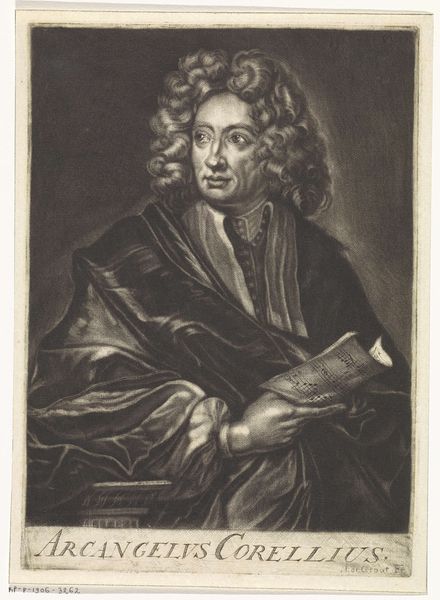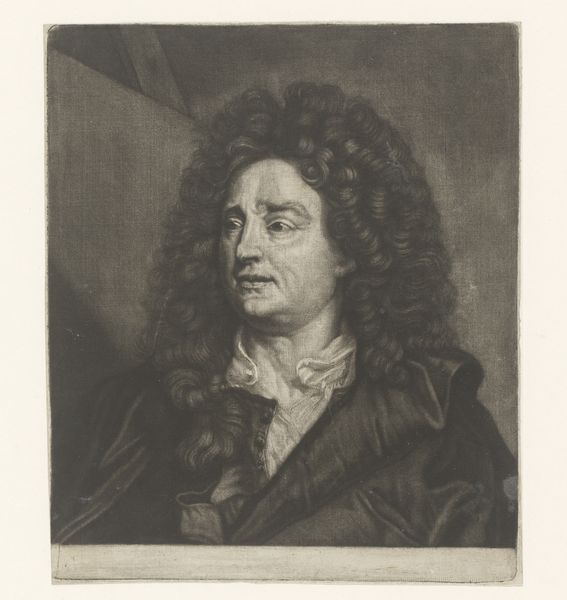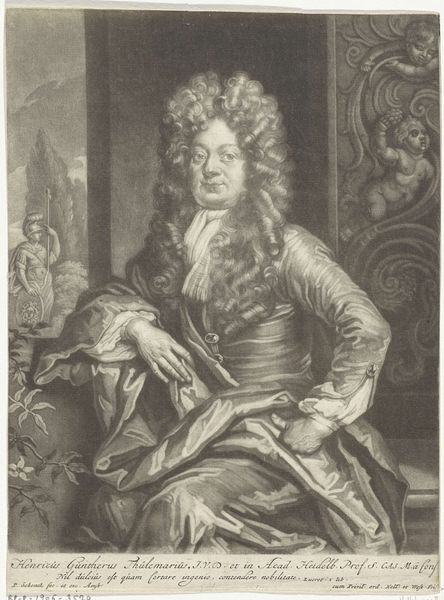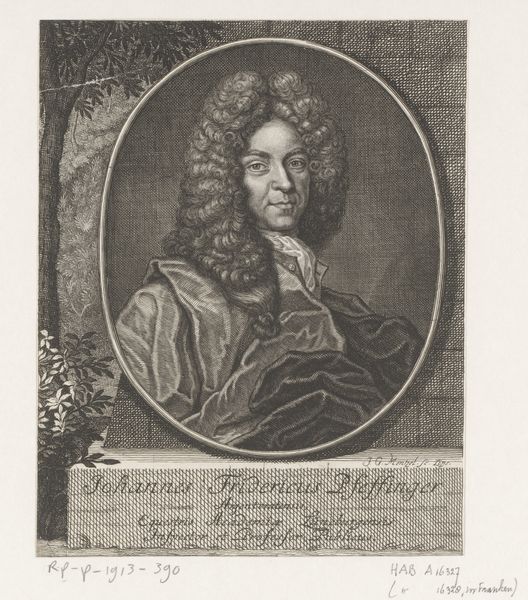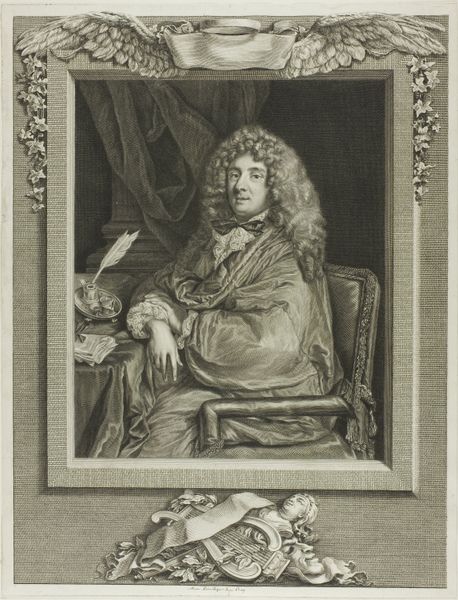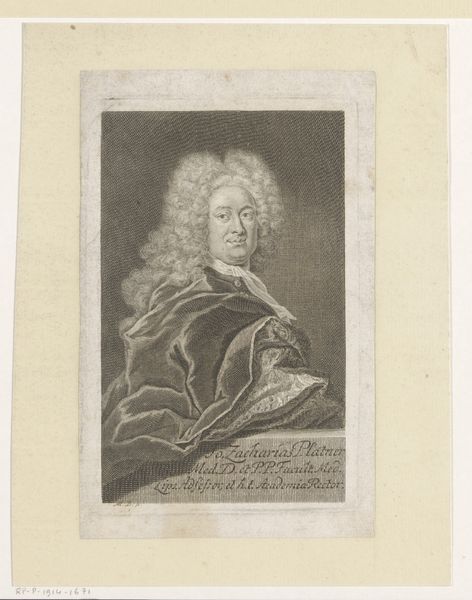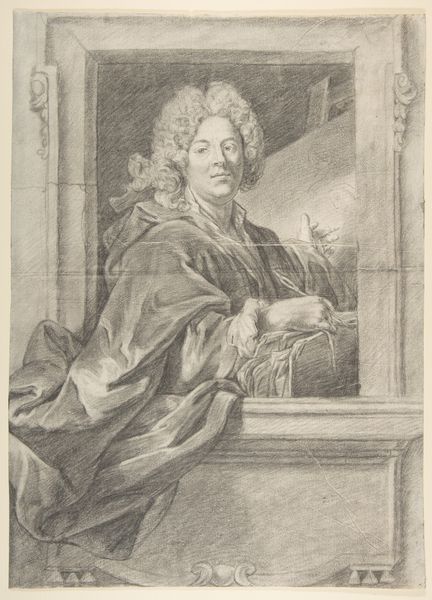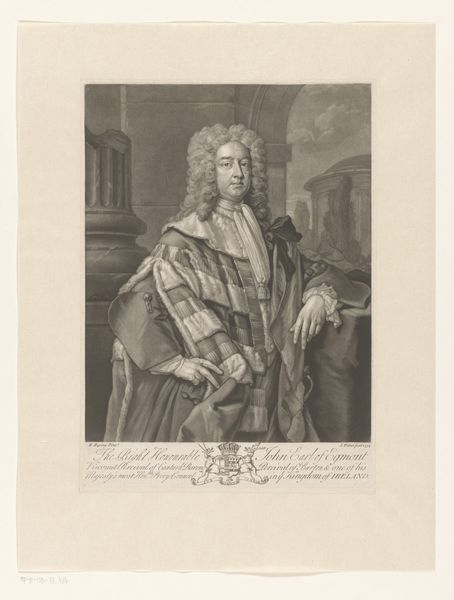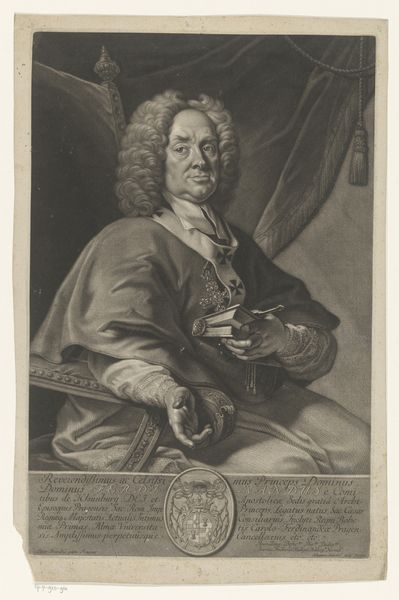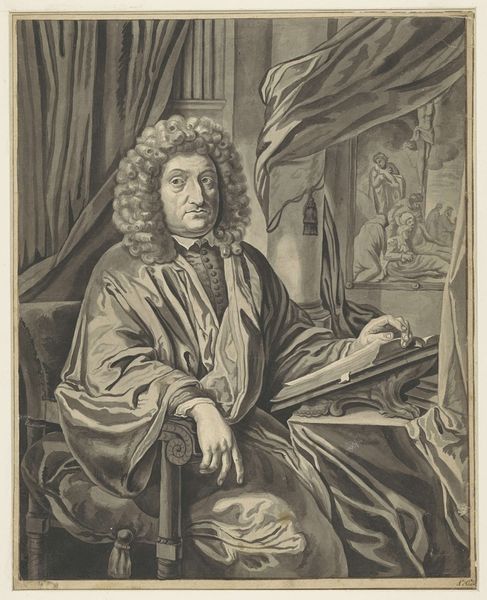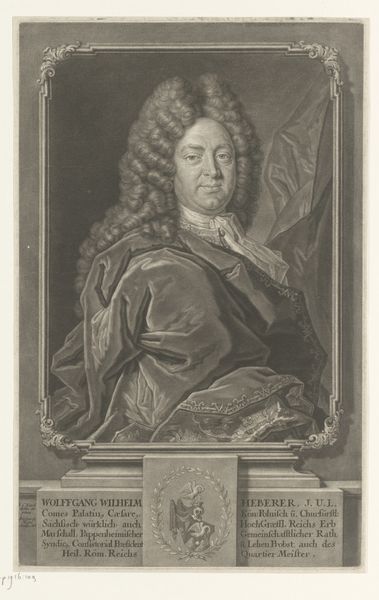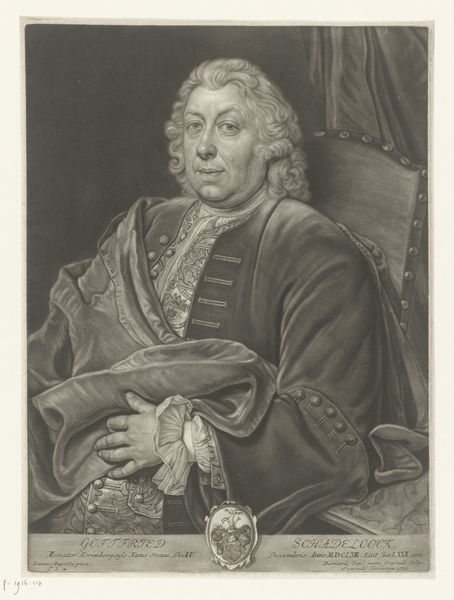
drawing, graphite, charcoal
#
portrait
#
pencil drawn
#
drawing
#
baroque
#
charcoal drawing
#
pencil drawing
#
graphite
#
charcoal
#
graphite
Dimensions: height 264 mm, width 194 mm
Copyright: Rijks Museum: Open Domain
Editor: So, here we have "Portret Nicolas de Largillière" drawn sometime between 1675 and 1750, by Girard van der Bruggen. It's a graphite and charcoal drawing. I'm struck by how much detail Bruggen packed into a monochrome image. What do you see in this piece, that maybe I'm missing? Curator: What isn't to love about Baroque flamboyance rendered in humble graphite and charcoal? It tickles me, the audacity of capturing such extravagance with, essentially, a fancy pencil. He seems to be almost mocking the formal portraits popular at the time, poking fun at the wig and robe. Don’t you think there’s a playful irony in immortalizing all that upper-class swagger with, well, what was probably sitting right there on his desk? Editor: I never thought of it like that! I guess I just assumed drawings were studies for paintings, but you're saying it might be its own commentary? It's so interesting how something that appears simple can have deeper layers. Curator: Precisely! Think about it: the original paintings of the period often symbolized power, wealth, status. A drawing like this throws all of that up in the air with charcoal dust. It almost whispers, "Remember, even emperors use graphite." Editor: Wow, I never considered the drawing as a statement itself! That’s an amazing way to look at it. I definitely won’t look at simple drawings the same way again. Thanks! Curator: Absolutely! And next time, bring an open mind and a fresh sense of whimsy. Art, even the serious stuff, needs a good laugh every now and then.
Comments
No comments
Be the first to comment and join the conversation on the ultimate creative platform.
